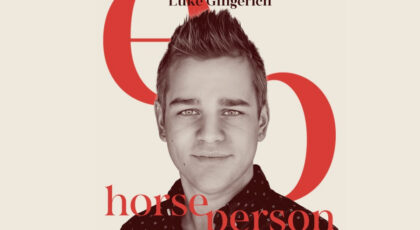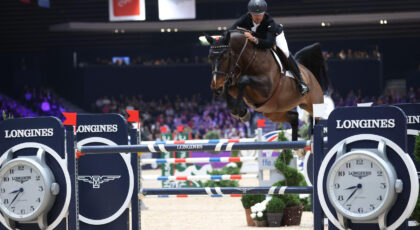#MasterclassMonday is a collaboration between Horse Network and NOELLEFLOYD.com to empower equestrians to help troubleshoot your training, master your mindset and up your game. This month’s instructor: show jumping trainer Simone Starnes.
Our entire riding careers, we’re told to keep our shoulders back, heels down, eyes up, hands soft “the list goes on.”
Have you ever taken the time to sit back and really examine why we’re told to do these things? There’s often a misconception of what body control really is and riders become so focused on checking off the boxes of “good equitation”that they don’t fully understand the function of each part of their riding position.
What is body control?
Body control is not just making sure our body checks off the boxes of a perfect position, but rather a way of riding that allows us to have an accurate feel and control of our horse without inhibiting their movement. It’s balance, symmetry, and a suppleness that allows us to move with our horses.
For example, maybe you’ve been told you have great posture while riding, but struggle to keep your elbows and hands soft while following your horse’s mouth. This is an example of focusing too much on one component, rather than how each body part works together to create this harmony with our horse.
This is just the teaser! Learn all things body control with Equestrian Masterclass: Simone Starnes Teaches 3 Exercises for Better Body Control.
It’s all about the core
So, where do we begin when establishing body control?
Growing up riding young horses, I was always faced with unpredictability and in turn, had to make sure my body control was in check so I could stay with the horse (while also staying on top of them). The best way to make sure you are centered and balanced over your horse is through your core. By keeping your core engaged, this allows you to have the freedom to move the other parts of your body in partnership with your horse’s strides.
Engagement simply means contracting your muscles. To engage your core, you are contracting the muscles in your midsection to support the spine.
When you learn to keep your core engaged while riding, you can focus more on keeping your hands soft and putting your aids on when you need to rather than focusing on too many things at once. Separating the movement of your arms and your legs from your core results in a softer position and more fluidity in conjunction with your horse’s movement.
Body control is for all disciplines
Body control doesn’t work better for one discipline versus another. Whether you have a cutting horse, reining horse, compete in dressage or hunter/ jumper, the same holds true across all disciplines: an engaged core keeps you secure on the horse while still allowing your horse to move naturally.
When your core is engaged, anything can happen underneath you and you’ll stay moving with them, while allowing your aids to be soft and supple. Learning how to effectively use each section of your body will be the biggest game changer in building better body control, creating a strong and effective leg, and a stable core.
This is an excerpt from Simone’s Equestrian Masterclass, 3 Exercises For Better Body Control To access the course, as well as a full library of courses from the likes of Ian Millar, Anne Kursinski and more, go to equestrianmasterclass.com.




 October 31, 2022
October 31, 2022 




























